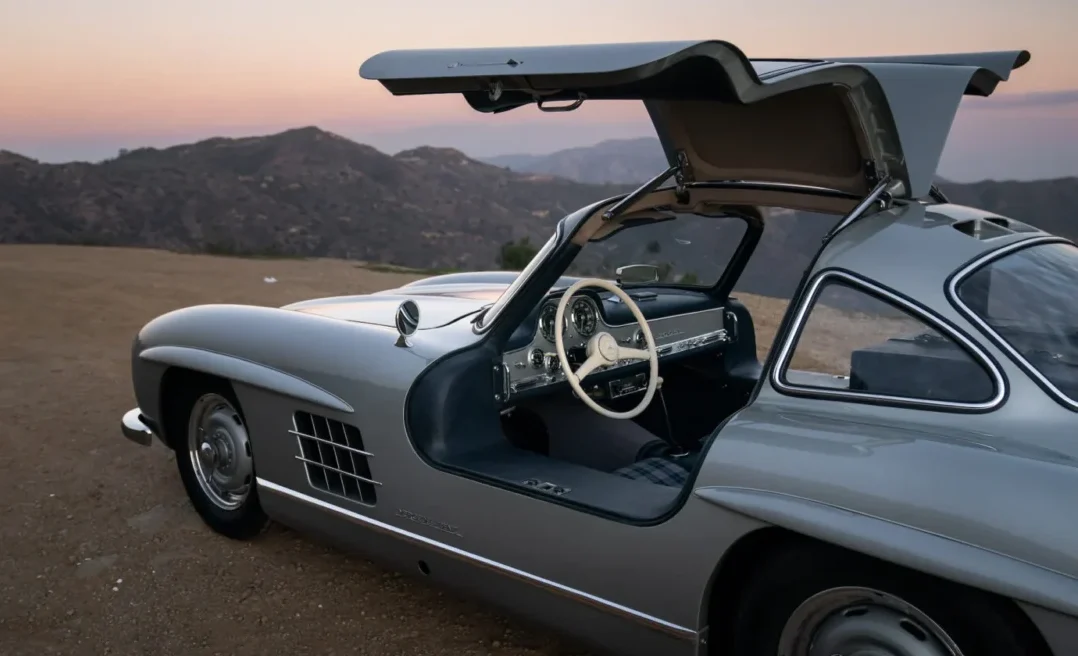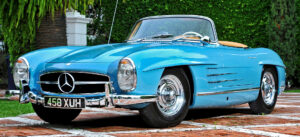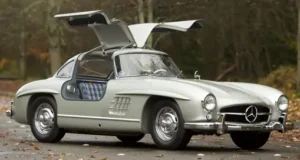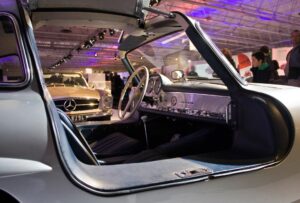Timeless elegance of the Mercedes 300SL
1. The Legacy of the Mercedes 300SL: A classic for the ages
2. A Legacy of racing and innovation
4. The 300SL’s impact on the Automotive World
5. Enduring Excellence and Legacy
The Legacy of the Mercedes 300SL: A classic for the ages
The post-war era marked a transformative period for the automotive world, and few manufacturers embodied this change more profoundly than Mercedes-Benz. Rising from the aftermath of World War II, Daimler-Benz revitalized its lineup and set new benchmarks in both engineering and design. Among its remarkable achievements was the introduction of the Mercedes-Benz 300SL, a car that seamlessly bridged the gap between the racetrack and the open road.
A Legacy of racing and innovation
Mercedes-Benz’s heritage in motorsport laid the groundwork for the 300SL. In the vintage years, enthusiasts had the privilege of owning touring car versions of legendary racers like the SSK and SSKL. These models were as thrilling on the roads as they were on the track. Post-war, the company continued this tradition by combining cutting-edge engineering with luxury to produce race-ready road cars.
In 1953, the launch of the “Ponton” series signaled a design evolution. This marked the introduction of unitary body construction and modern styling cues that would influence Mercedes-Benz’s passenger cars for years. But the real excitement came in 1954, with the unveiling of two groundbreaking sports cars at the International Motor Sports Show in New York: the 300SL and the smaller 190SL.
The Birth of the 300SL
The 300SL, or “Sport Leicht” (Sport Lightweight), was a marvel of engineering. Powered by a 3.0-liter fuel-injected engine, it delivered 200 horsepower—remarkable for its time. This direct fuel injection system, derived from aviation technology, was a pioneering feature that set the SL apart from its competitors. The lightweight tubular space frame construction provided strength while keeping the weight down, resulting in impressive performance and handling.
One of the most iconic elements of the 300SL was its “gullwing” doors. Necessitated by the unique frame design, these upward-opening doors became a symbol of automotive innovation and style. The car’s sleek, aerodynamic silhouette, accentuated by air vents and a large three-pointed star grille, was the work of designer Walter Häcker.
The 300SL’s impact on the Automotive World
The 300SL wasn’t just a technological showpiece; it was a commercial success, largely thanks to Max Hoffman’s influence. Hoffman, the American importer of Mercedes-Benz, recognized the potential of a race-derived road car for the burgeoning U.S. market. His advance order for 500 units ensured the project’s viability, despite initial skepticism from Mercedes-Benz’s technical director, Fritz Nallinger.
Upon its arrival in showrooms in 1954, the 300SL set a new standard for high-performance touring cars. Its top speed of 154 mph (246 km/h) and precise handling made it a favorite among discerning drivers. Coupled with luxury features like an all-synchromesh four-speed transmission, a more comfortable interior, and advanced ventilation systems, the 300SL was as civilized on the road as it was thrilling to drive.
Enduring Excellence and Legacy
Production of the 300SL coupé ended in 1956, with a total of 1,400 units built. Most of these found their way to the United States, where the car’s price tag of nearly $7,000—later rising to $8,905—cemented its status as a symbol of affluence and style.










